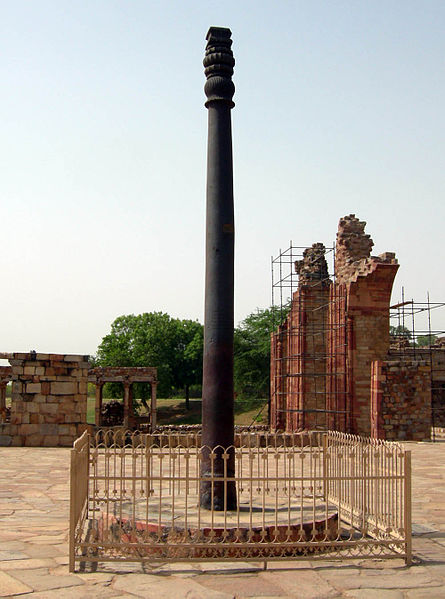Ferrous metallurgy is the metallurgy of iron and its alloys. The earliest surviving prehistoric iron artifacts, from the 4th millennium BC in Egypt, were made from meteoritic iron-nickel. It is not known when or where the smelting of iron from ores began, but by the end of the 2nd millennium BC iron was being produced from iron ores in the region from Greece to India, The use of wrought iron was known by the 1st millennium BC, and its spread defined the Iron Age. During the medieval period, smiths in Europe found a way of producing wrought iron from cast iron, in this context known as pig iron, using finery forges. All these processes required charcoal as fuel.
Willamette Meteorite, the sixth largest in the world, is an iron-nickel meteorite.
Iron meteorites consist overwhelmingly of nickel-iron alloys. The metal taken from these meteorites is known as meteoric iron and was one of the earliest sources of usable iron available to humans.
The iron pillar of Delhi
Dagger and its scabbard, India, 17th–18th century. Blade: Damascus steel inlaid with gold; hilt: jade; scabbard: steel with engraved, chased and gilded decoration
Metallurgy is a domain of materials science and engineering that studies the physical and chemical behavior of metallic elements, their inter-metallic compounds, and their mixtures, which are known as alloys.
Gold smelting workers in Siuna, Nicaragua in the late 20th century
Casting, the process of pouring molten metal into a mold
Artefacts from the Varna Necropolis in present-day Bulgaria
Iron, the most common metal used in metallurgy, is shown in different forms, including cubes, chips, and nuggets








